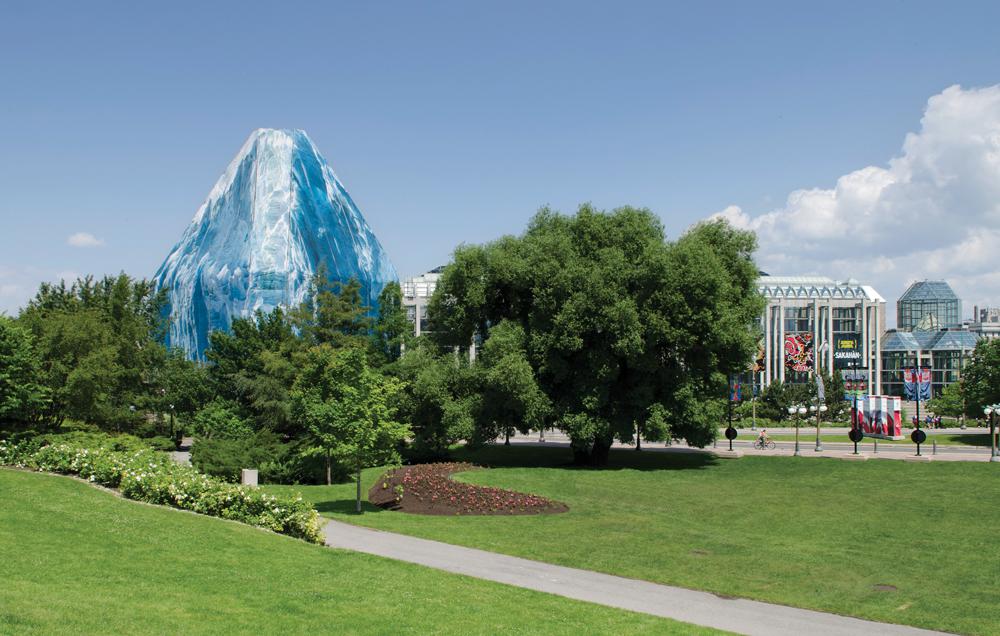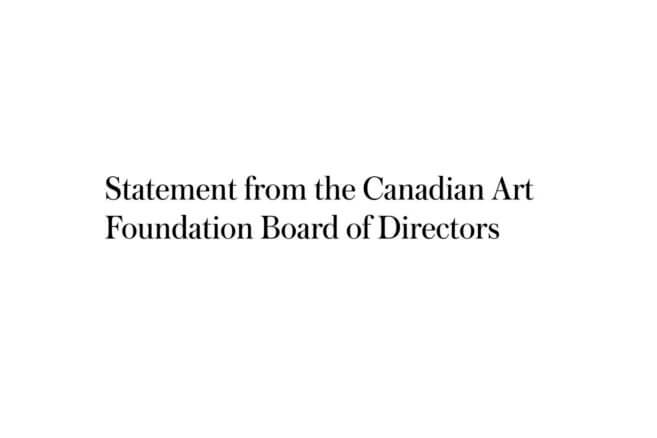The Indigenous Quinquennial is returning to the National Gallery in 2019. “The National Gallery of Canada unveiled the first Indigenous Quinquennial in 2013, so in 2019 it’s better late than never for a major survey that will feature 85 artists from 20 countries and 43 tribal affiliations, including 30 artists from 16 First Nations,” the Globe and Mail reports. “Offering an overview of contemporary work, the exhibition will focus on performance (as well as including beadwork, painting and video) and will trace the links between contemporary practice and ancient forms and among global Indigenous networks.” It will run November 8, 2019, to April 5, 2020. (Globe and Mail)
“The Indigenous renaissance was truly here in 2018—and it’s not going anywhere.” In an excellent essay, Alicia Elliott recaps the many high-profile breakthroughs of Indigenous creators in the past year, and reflects on what’s next. (CBC Arts)
The United Nations has named 2019 the international year of Indigenous languages. “Languages play a crucial role in the daily lives of people, not only as a tool for communication, education, social integration and development, but also as a repository for each person’s unique identity, cultural history, traditions and memory,” the UN said. “But despite their immense value, languages around the world continue to disappear at an alarming rate.” (Nunatsiaq News)
Mexican-Canadian artist Rafael Lozano-Hemmer has been affected by the US national museums shutdown. “As the partial shutdown of the federal government enters its second full week, all Smithsonian museums and many other agencies in D.C. and beyond have shuttered for lack of funds, or are getting ready to close for an indefinite period,” Artnews reports. It adds: “The [Montreal-based] Mexican-Canadian artist Rafael Lozano-Hemmer has also had a Hirshhorn show suspended from view as a result of the political turmoil. ‘I see this as a stark reminder of the current administration’s belligerence and my thoughts go out to the federal workers affected and in general to the dire consequences that Trump’s actions have on the country and the planet,’ Lozano-Hemmer said in an email. ‘As a Mexican, it’s ironic that the shutdown happens because of Trump’s insistence on building an unnecessary wall—one which according to his promises was going to be paid for by Mexicans. I look forward to the end of the shutdown and hope my exhibition can “build bridges” between our countries.’” (Artnews)
More details have come to light on how Canadian museums became reliant on a tenuous tax break. “The Art Gallery of Ontario said it spent $1.3-million of its “very limited” funds in 2017 to buy art. It received $327,000 worth of pieces as “straight” gifts, those without any extra tax break. And it added $38.9-million of works through the special certification process administered by CCPERB,” reports Chris Hannay in the Globe and Mail. “The Montreal Museum of Fine Arts bought $1.6-million of art in the last fiscal year, got another $1.4-million from regular donations and received $10.8-million of items through the special tax break.” (Globe and Mail)
The Mandela exhibition at the Canadian Museum of Human Rights in Winnipeg has been extended in a big way. The exhibition was originally scheduled to end January 6, but will run until October 14 instead. A discounted admission rate of $10 per person will apply January 15 to 31 as well (it’s usually $21 for adults). New school programs related to the show are also being developed by Brock University’s Dolana Mogadime, whose mother’s story as a South African anti-apartheid activist is presented in the exhibition. “Mandela: Struggle for Freedom” was developed in collaboration with the Apartheid Museum of Johannesburg, South Africa, and includes a replica of the jail cell in which Mandela was held for decades. (press release)
Stolen material has been returned to Art City in Winnipeg. “A treasured backup drive holding more than 20 years of history was returned to its rightful owners at Art City on Saturday afternoon,” the CBC reports. “On Boxing Day, the non-profit organization’s office on Broadway was broken into; the archive was stolen, along with a 3D printer, several digital cameras and a scanner. The hard drive carried the most amount of value for the organization, as it held files dating back to the beginning of Art City.” This non-profit organization, founded by Wanda Koop, helps improve children’s lives through art. (CBC)
Montreal architect and public art advocate Jean Dumontier has died. “He was also the first architect to create the art for the [métro] stations he designed, including four painted concrete murals in the Île Sainte-Hélène station, since renamed after former mayor Jean Drapeau,” reports the Halifax Chronicle-Herald. “The distinctive yellow murals represent the character of Atlas, who in Greek mythology was condemned to hold up the heavens. They were created to tie in with the Expo 67 theme of ‘man and his world,’ according to the agency’s website.” Later, as a transit agency director, Dumontier pushed for “inclusion of the large scale sculptures, murals and paintings” in the métro station network. (Halifax Chronicle-Herald)
A shortlist has been announced for Canada’s participation at next Venice Architecture Biennale. The shortlist of four includes: Azrieli School of Architecture and Urbanism in Ottawa, which has proposed “to foster a critical position on Canada’s responsibilities to inland bodies of water, Indigenous nations, human and non-human agencies, and the legal-governance entanglements that shape our collective experiences of Canada as an idea and place”; Ja Architecture Studio in Toronto, which has proposed to examine lightness and “how we can explore the boundaries of the architectural imagination while connecting it to broader national issues such as ecology, regionalism, colonization, and settlement”; Common Accounts in Toronto, which has proposed After Life, a project that “interrogates the intensifying attention on the body in this moment characterized by its existential instability”; and T B A + David Theodore in Montreal, which takes as its point of departure the fact that “Canada’s architecture is film-famous. Global citizens know Canada’s architecture because they go to the cinema. But unlike Paris or Rio de Janeiro, our cities rarely play themselves in famous movies.” (Canada Council)
In case you missed it: there are several artists and art supporters on the latest Order of Canada appointees list, and a Nova Scotia artist has won a vote to keep a controversial sculpture on his front lawn.

 One of the highlights of “Sakahàn,” the National Gallery of Canada’s first Indigenous quinquennial in 2013, was Inuk Silis Hoegh’s Illuliaq—a massive iceberg print on mesh that covered one of the gallery’s towers. Photo: National Gallery of Canada.
One of the highlights of “Sakahàn,” the National Gallery of Canada’s first Indigenous quinquennial in 2013, was Inuk Silis Hoegh’s Illuliaq—a massive iceberg print on mesh that covered one of the gallery’s towers. Photo: National Gallery of Canada.




